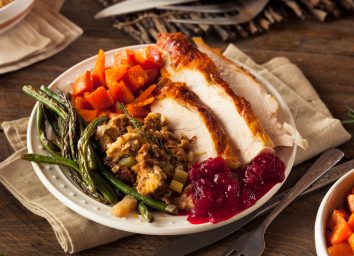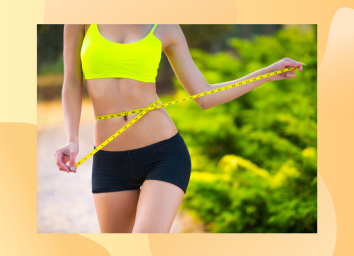Eating Habits for a Flatter Stomach After 40, Say Dietitians
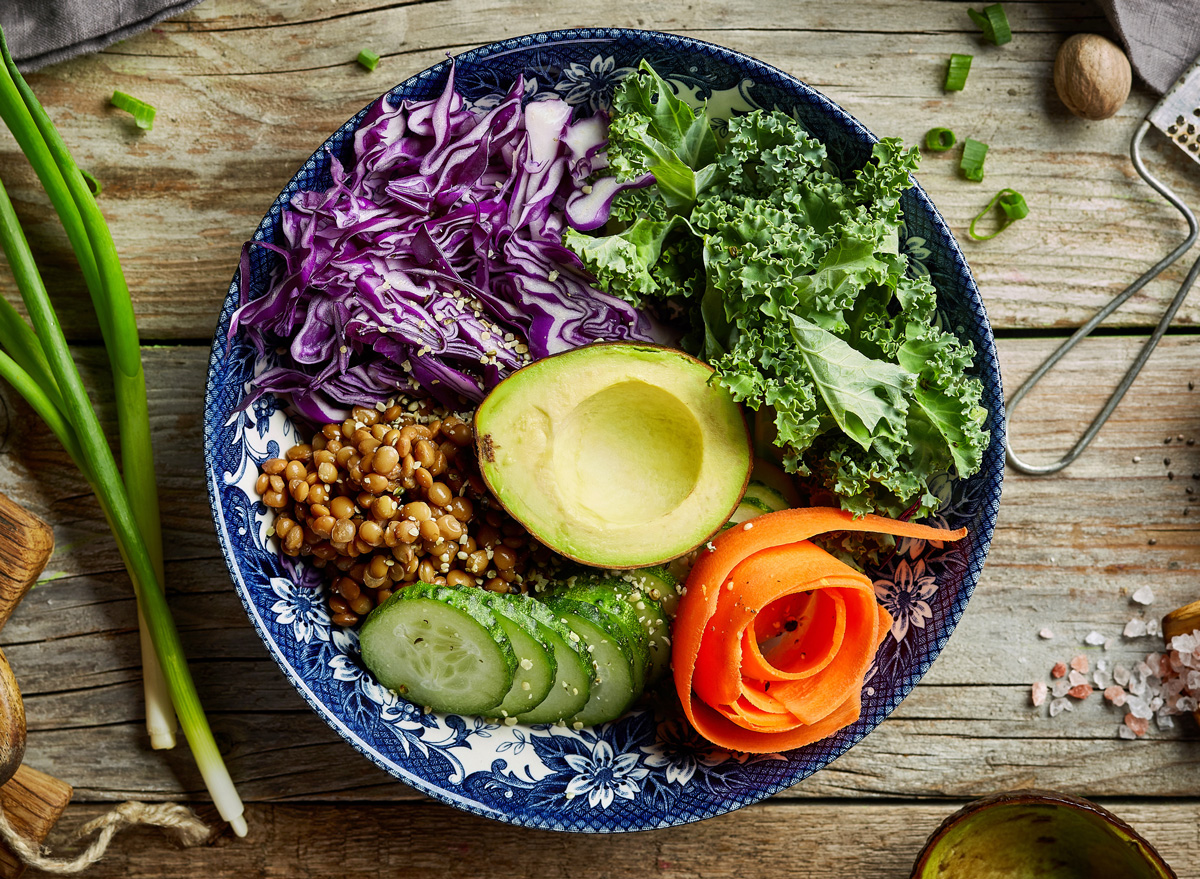
There's no shortage of strategies for achieving the flatter stomach you're after when you've hit 40. But many weight-loss plans can be completely overwhelming, which sets you up for failure rather than success.
Most diets just ask too much of you, too soon. They're so challenging and restrictive, they'll frustrate you into quitting before you see results. "If you can't follow a diet long-term, then your results won't last long-term," says registered dietitian nutritionist Sandy Younan Brikho, MDA, RDN, owner of The Dish on Nutrition.
Brikho says one of the biggest mistakes dieters make is trying to make too many big lifestyle changes at the same time, which can be overwhelming especially when you are already so busy. "The biggest recommendation I can make is to focus on only one small change you want to make, master that by making it into a new habit, and then pick your next small change," she says. "That's the secret to getting long-term results that last."
In other words, as you face the New Year, don't bite off more than you can chew. Choose one of the following eating habits recommended by dietitians and make it stick before going back to the buffet. (And wash these tips down with Drinking Habits to Avoid for a Lean Belly After 40.)
Eat more, not less often.
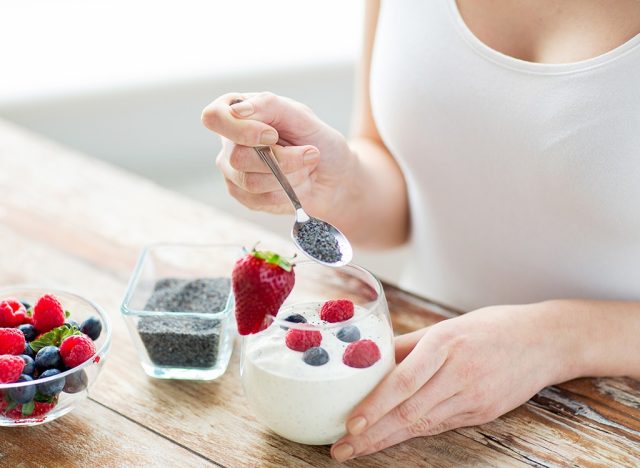
Many weight-loss experts recommend eating five or six small meals and snacks daily. The idea is to keep your hunger at bay to avoid overeating. But jumping to six meals a day can be difficult if you currently eat just twice. "I recommend starting small, adding a snack and then gradually another meal," says Brikho. "Success comes easier because you are making small changes over time. Eating more frequently throughout the day will increase your metabolism, which will help you lose weight and eventually get a flatter belly."
Eat more 'resistant starches.'
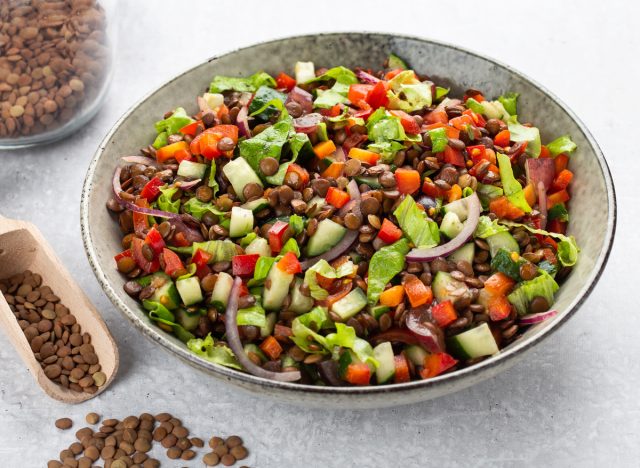
These starches are called "resistant" because they pass through your small intestine undigested. They are fermented by beneficial bacteria living in your gut. "The by-products from this fermentation process help improve the insulin response and decrease fat storage around the waist," says registered dietitian and gut health expert Kara Landau, RD, founder of Uplift Food.
Some types of resistant starches include legumes and lentils, raw bananas and potatoes, seeds, nuts, and grains. "Consuming foods high in resistant starch on a daily basis will help you see results in a short period of time and is as simple as enjoying overnight oats in the morning, snacking on cashew nuts or adding legumes and lentils to salads or soups for a light evening meal," says Landau.
Add these three fat burners to your diet.
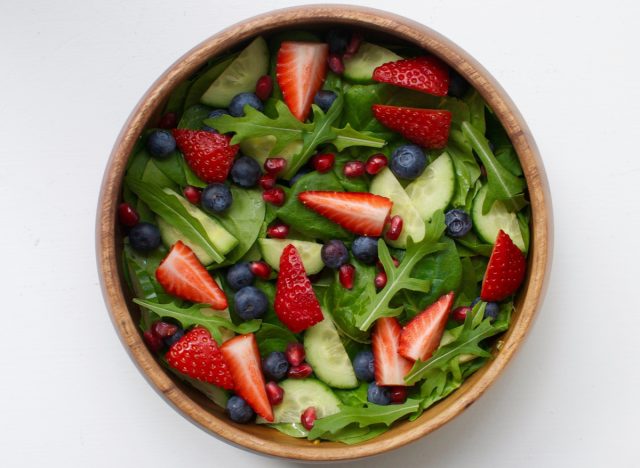
Often what you add to your diet is more important than what you subtract when your goal is a flatter belly. Colorado-based nutritionist Janet Coleman, RD, a dietitian for The Consumer Mag, recommends adding these three low-calorie foods to your diet every day.
1. Cucumber is rich in water content and low in calories. "Use it as a substitute for bread or rice with your meals," Coleman says.
2. Berries are high in antioxidants that help fight free radical damage while improving the health of cells. "Berries contain vitamins B6, C, and E, which provide anti-aging benefits, prevent heart disease and boost cognitive function," she says.
3. Leafy Greens like spinach, kale, and lettuce contain plenty of fiber that helps get rid of excess water from the body thus reducing the bloating effect on our bodies, says Colman. A meta-analysis of studies published in the journal Nutrients showed that increased consumption of fruits like berries and vegetables, including green leafy ones, was associated with long-term weight loss.
Follow the 50% rule.
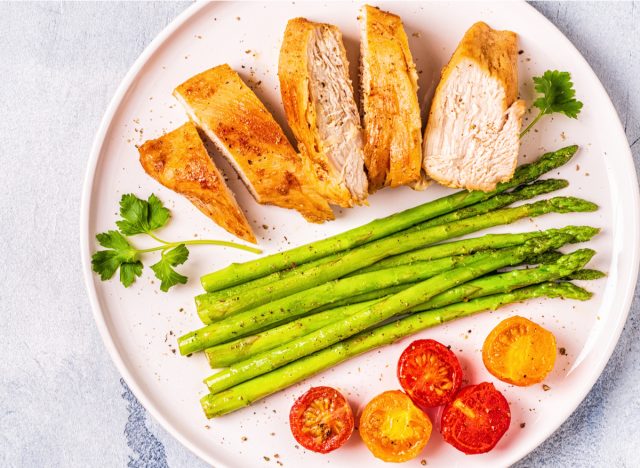
At every meal, cover half of your plate with vegetables. This simple habit "will help increase your fullness, prevent overeating, encourage portion control, and help you get the nutrients you need," says Brikho. Try it. "In doing so, you won't be tempted to overeat high-calorie foods and you'll lose weight."
Eat more plants.
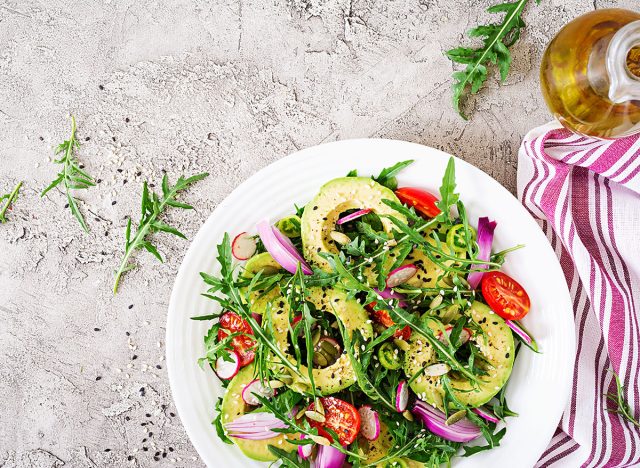
"As we age, body fat, especially in the belly area, tends to increase as our lean muscle mass and bone mineral density decreases," says registered dietitian Mehak Naeem, RDN, a registered dietitian nutritionist for the Candida Diet. "The best eating habit to adopt in your 40s is eating more plant-based as they are a good source of micronutrients, proteins, and healthy fats," Naeem says. "Try to consume fat from plant and marine sources, limiting animal sources."
Fill up on fiber.
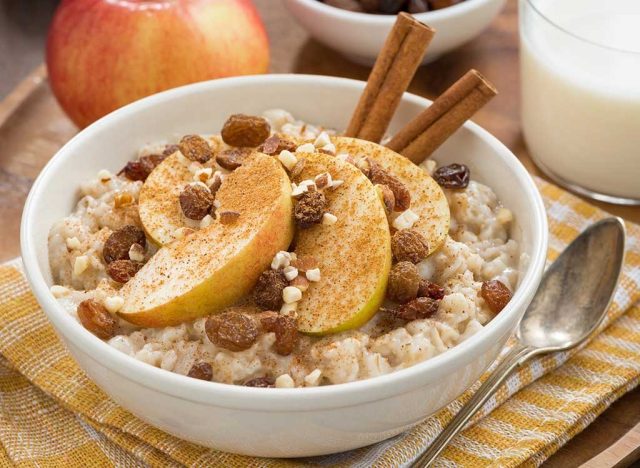
It's a habit every dietitian endorses. The previous habit of eating lots of plants will help you hit the recommended daily intake of 25 to 30 grams, which few Americans reach, according to a recent analysis of dietary questionnaires from more than 14,600 U.S. adults. Data from the National Health and Nutrition Examination Survey between 2013 and 2018 showed that only 5% of men and 9% of women are meeting that daily requirement for dietary fiber.
"Consuming a high fiber diet can help you get a flat stomach in your 40's and beyond because it keeps you feeling fuller for longer, so you don't overeat," says Landau. "It also supports gut health to reduce bloating and keep things moving along the digestive tract." Read this for more Eating Habits for Good Gut Health.
And for even more tips, read these next:

